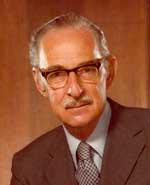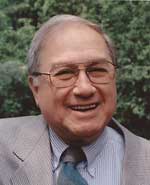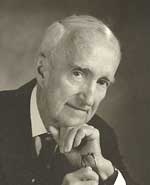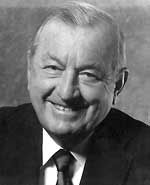Carol Mowbray
Professor of Social Work and Associate Professor of Psychology Carol T. Mowbray died Aug. 23 of cancer. She was co-director of the School of Social Work (SSW) Center for Poverty, Risk, and Mental Health.

From 1996-2001, Mowbray was the SSW associate dean of research. Her nationally and internationally cited research and many publications focused on community integration and recovery for adults with serious mental illnesses, especially homeless people and those with co-occurring substance-use disorders. She also helped develop a special emphasis on women who are mentally ill—especially mothers and their children. Mowbray developed and evaluated the effectiveness of intervention for disadvantaged mentally ill populations, focusing especially on consumer-run and supported education programs in various locations.
“Carol was one of the profession’s intellectual giants,” says Paula Allen-Meares, professor and dean of SSW. “Although I could identify a litany of her intellectual contributions, one that is most notable is that she designed and conducted the only experimental trial of supported education—an intervention designed to assist adults whose postsecondary education was interrupted due to mental illness. This community-based intervention is being replicated throughout the country.”
Mowbray earned her bachelor of science degree in psychology and mathematics and her master of science degree in psychology from Tufts University, and her doctorate in developmental psychology from U-M. Prior to joining SSW in 1994, she was an associate professor and director of the Research Office at the Wayne State University School of Social Work, and was a clinical professor of ecological/community psychology at Michigan State University.
For nearly a decade, Mowbray was the director of research and demonstration projects for the Bureau of Program Development and Quality Assurance at the Michigan Department of Mental Health (MDMH). Prior to that, she held several positions as an evaluator for MDMH.
“I could never possibly express my gratitude for Carol’s influence on me both as a professional and as a person,” says Rich Visengardi, acting director of the Wayne County Mental Health Board. “The experience of working for Carol at MDMH exceeded all my expectations and became much more then simply working for this bright and passionate woman who was clearly ahead of her time. Her legacy is a key motivating factor for all of us to pursue the right things.”
Mowbray was a tireless advocate of psychosocial rehabilitation, especially supported education, and a willing and capable mentor to countless doctoral students, junior faculty members and colleagues during her career.
“Carol’s focus on psychosocial rehabilitation grew from the idea that everyone, regardless of disability, can have a productive role in the life of the community,” says colleague and friend Mark Holter, assistant professor of social work. “This is completely congruent with Carol’s well-deserved reputation for mentoring colleagues and students.
“She enjoyed collaboration and truly valued diverse input. In recognition of her important research contributions and her mentoring, Carol was deeply respected by mental health researchers from around the world.”
Mowbray was a prolific author, contributing more than 130 scientific articles, chapters and books. The recipient of numerous honors and awards during her career, she was honored as the 2005 recipient of the American Psychological Association Harold Hildreth Award. In addition, the U.S. Psychiatric Rehabilitation Association announced recently that its Early Career Research Award has been renamed the Carol T. Mowbray Award.
Mowbray is survived by two sons, Orion and Nicholas. She was preceded in death by her husband, Sherman Mowbray. Condolences may be sent to Orion and Nicholas Mowbray, 5460 Prairieview, Brighton, MI, 48116.
A memorial service will be at 4 p.m. Sept. 9 in the Michigan League Ballroom.
At Mowbray’s request, in lieu of flowers, a scholarship fund to support doctoral students planning to conduct research in the area of psychosocial rehabilitation has been established. Contributions may be sent to the Carol T. Mowbray Scholarship Fund, School of Social Work, 1080 S. University, Room 4733, Ann Arbor, MI, 48109-1106. Gifts also can be made by calling the Development Office at (734) 615-3402
Chauncey Korten
Chauncey Frederick Korten, emeritus professor of art, died from complications of Alzheimer’s disease July 28 in Westerly, R.I. He was 88.
Korten was “Kort” to everyone who knew him—from Detroit’s auto empire, to New York’s advertising world, to his University colleagues. All who worked with him agree that underlying his prowess as an artist, designer and advertising great, he was at heart a master teacher.
A native of the Upper Peninsula, Korten found his way to U-M showing promise as a talented illustrator and artist. He also arrived with his fiddle in hand and earned extra money playing with a band at campus dances. He graduated in 1941 and went to work for Chrysler, where he spent the war years designing Army vehicles.
After the war, he was wooed away by the Ford Motor Co. as an illustrator for Ford Times, the company’s popular periodical. Ford asked Korten to join the ranks of Kenyon & Eckhardt, Inc., the company’s agency in New York. Thus began a relationship between client, agency and talent that became an industry model for decades.
Korten was an early leader of the group approach to tackling problems, bringing together writers, artists and photographers to overcome challenges and create effective advertising. He became vice president and creative director of Kenyon & Eckhardt. Among the many products to profit form his talent was the Lincoln Continental. Korten and his team spotlighted the Continental sedan and convertible with headlines spelling out prices and subheads reminding readers “there are no lesser models.”
In 1967 Korten left New York to create a new program of study for U-M—a course he called “Advertising Workshop.” Its focus was creative problem-solving and brought students of advertising together in real-life situations with clients recruited from among Korten’s many contacts. Students studied product benefits, competition, marketing strategies and creative implementations, and concluded the course by making a formal presentation to the client. His students were in demand among the country’s leading ad agencies and many advanced rapidly to leadership positions.
In 1984, Korten retired from the University and headed to his longtime summer home of Block Island, R.I.
Korten is survived by his wife, Patricia; his sons, Jerome and Tristram; daughter, Katherine; three sons from his first marriage, Noel, Christopher and Kenneth; and nine grandchildren.—Submitted by the Korten family
Horace Davenport
Horace W. Davenport, the William Beaumont Professor Emeritus of Physiology, author of three best-selling textbooks on acid-base chemistry and the physiology of the digestive tract, Rhodes Scholar and former president of the American Physiological Society, died of complications of pneumonia Aug. 29 at his home in Ann Arbor. He was 92.

Davenport was one of the world’s preeminent gastric physiologists whose landmark studies led to the discovery of the stomach’s barrier to injury. His findings led to a greater understanding of the gastric mucosal barrier, which prevents the stomach from injuring or digesting itself.
Born in Philadelphia on Oct. 20, 1912, Davenport completed his undergraduate studies at the California Institute of Technology (CIT) in 1935, prior to entering Oxford University as a Rhodes Scholar that same year. After obtaining a bachelor of science degree in animal physiology there, Davenport returned to CIT, where he received his doctorate in biochemistry in 1939.
One of U-M’s most distinguished scholars and teachers, Davenport joined the faculty as professor and chairman of the Department of Physiology in 1956, positions he held until 1978.
“Dr. Davenport was one of my most memorable and effective teachers,” says Dr. Robert Kelch, executive vice president for medical affairs and CEO of the U-M Health System. “His charismatic approach and wealth of knowledge and experience always kept me and my classmates spellbound. I feel a deep sense of loss.”
As chair of physiology for 22 years and one of the icons at the Medical School, Davenport was influential in the lives and training of hundreds of students throughout his career. He also will be remembered for rebuilding the department and making it one of the top research and teaching facilities in its field. Davenport retired from active faculty status in 1983.
“I met Dr. Davenport on my first day of medical school when he began lecturing to us about the GI tract,” recalls Dr. Allen S. Lichter, Medical School dean. “He was a brilliant and demanding teacher, one who still looms larger than life. For generations of students in Ann Arbor and throughout the world of medicine, Horace Davenport exercised considerable influence.”
One of his textbooks, “The ABC of Acid-Base Chemistry,” published in 1947, sold over 140,000 copies and now is in its sixth edition. Davenport also published more than 90 articles in scientific journals.
The recipient of many honors and awards throughout the years, Davenport received the Alumni Distinguished Service Award from CIT; the Friedenwald Medal from the American Gastroenterological Association; appointment to the National Academy of Sciences (NAS) in 1974; and the Ray Daggs Award for Services to Physiology from the American Physiological Society.
Davenport held memberships in the NAS; Council of the American Physiological Society; Society of Experimental Biology and Medicine; and Society of Gastro-Intestinal Radiologists. He also was an honorary member of the British Society of Gastroenterology.
In addition to Davenport’s son, Dr. Robertson Davies Davenport, and daughter-in-law, Dr. Nancy Wirth, both on the Medical School faculty, he is survived by grandsons, Nicholas and Alexander Davenport. He was preceded in death by two wives: Virginia (Diskerson) in 1968, and Ingeborg (Epstein) in 2004. He also was preceded in death by a son, Thomas Landis Davenport, who died in 1988.
Donations are being accepted for the Horace W. Davenport Lecture Fund or the Horace W. Davenport Scholarship Fund at https://cgi.www.umich.edu/cents-bin/cents-open/mcado2.—Submitted by Mary Beth Reilly, Medical School Communications
G. Robert Greenberg
G. Robert Greenberg, emeritus professor of biological chemistry, died May 15 at his home following a brief illness. He was 86.

Greenberg’s research career spanned six decades and several scientific disciplines. He was born in 1918 in Minnesota and received a doctorate in physiological chemistry from the University of Minnesota in 1943. During the early years of his career at Case Western Reserve University, he pioneered the use of radioactive compounds to elucidate the pathway for the biosynthesis of purines, one of two types of bases in DNA.
In 1957, Greenberg was awarded the prestigious Paul Lewis prize and he joined the faculty of the newly reorganized Department of Biological Chemistry at the U-M Medical School. Greenberg refocused his research on the bacteriophage T4, which infects E. Coli and reprograms the cell to synthesize a new type of viral DNA. Greenberg’s research was innovative and imaginative, and he became a leader in the emerging field of molecular biology.
Greenberg transmitted his great enthusiasm for bench research to several generations of graduate students and postdoctoral fellows. Through his contacts with the early pioneers of molecular biology, he launched many students on their academic and scientific careers. Junior faculty colleagues also acknowledge his influence on their scientific development.
Mandatory retirement laws forced Greenberg to step down in 1988, but he continued his research on the T4 rib nucleotide reductase for many years as an active emeritus professor. He taught a graduate biochemistry seminar until last year.
Greenberg had a special passion for amateur radio. Following a coup in Brazil, he helped redirect a scientific expedition headed for the Amazon River to the Oronoco in Venezuela to study the genetics of indigenous Indian tribes. He took pleasure in linking members of the Ann Arbor community with family members living in South and Central America before phones and computers readily were available.
Greenberg is survived by his wife of 39 years, Susan Jiga Greenberg; children James (Eva) of Tucson, Ariz., Paula Marshall (Charles) of Los Angeles, Bettie (Gary Clark) of Ft. Collins, Colo., Alice Vorbach (Robert) of Nashua, N.H., Ela (Amir Cohen) of Jerusalem, Israel, and Marc Efraim (Marsha Davison) of Denver; a brother, Frank Ready of Los Angeles, and nine grandchildren.
Memorial contributions may be made to the American Civil Liberties Union of Michigan, 60 W. Hancock, Detroit, MI, 48201.—Submitted by Margaret Lomax, Department of Otolaryngology/Kresge Hearing Research Institute
Dr. William Henry Beierwaltes
Dr. William Henry Beierwaltes—who founded one of the nation’s first hospital programs for the use of radioactivity in medicine, co-developed several nuclear medicine agents still in use today, wrote the first textbook on the topic, and conducted radiopharmaceutical research during five decades—died of natural causes Aug. 14 at his home in Petoskey, Mich. He was 88.

At the dawn of the atomic age, and the very beginning of his career, Beierwaltes attended the first training course for physicians on the medical use of radioactive iodine. From then on, he devoted his career to finding new ways to detect and treat cancer and other conditions using short-lived radioactive elements.
A native of Saginaw, Mich., Beierwaltes spent nearly his entire career at U-M, where he received his bachelor’s degree in 1938, his medical degree in 1941 and his training as an endocrinologist. He was encouraged to pursue the new field of nuclear medicine soon after joining the Medical School faculty in 1945.
As a young assistant professor, he began a clinic for patients with hyperthyroid disease and thyroid cancer, using radioactive iodine to detect abnormal activity in the thyroid gland and locate tumors. He later became a national champion of the use of radioiodine together with surgery—now the standard of thyroid diagnosis and care.
Appointed to lead the University’s new Clinical Radioisotope Service in 1952, Beierwaltes rose to chief of the Nuclear Medicine Division when it was formed in the 1960s. With no books available to guide clinicians on the use of radioactive elements, he led the writing of the first, “Clinical Use of Radioisotopes,” published in 1957.
Beierwaltes is credited with the original idea to bind radioactive iodine,
I-131, to the hormone-like substance called meta-iodobenzylguanadine (MIBG), as a way of carrying detectable radioactivity directly to cells in the center of the adrenal gland and related tissues. Beierwaltes was the co-holder of a patent on MIBG, which originally was developed at U-M in the 1970s to allow the adrenal gland to be seen on medical images.
During his career, Beierwaltes wrote or co-authored 257 peer-reviewed papers, 61 other academic papers, four books and 77 book chapters. He also led the writing of grants to fund research and facilities that fueled the rapid growth of nuclear medicine at U-M. One of the most significant was a grant from the National Institutes of Health that funded U-M’s PET center, including a medical cyclotron.
Among the awards given to Beierwaltes during his career were a Guggenheim Fellowship in 1966, a Commonwealth Fund Award in 1967, the Society of Nuclear Medicine’s Georg de Hevesy Nuclear Medicine Pioneer Award in 1982, the U-M Distinguished Faculty Award (also in 1982) and the American Medical Association Scientific Achievement Award in 1994.
An avid sailor, Beierwaltes retired to Grosse Pointe, Mich., along the shores of Lake St. Clair in 1987, but kept active as a member of the nuclear medicine departments at two Detroit-area hospitals until 1994. He is survived by his wife of 63 years, Mary-Martha, and by children Andrew, William Howard and Martha. A private memorial was held Aug. 21 in Petoskey.—Submitted by Kara Gavin, UMHS Public Relations
Walter McNerney
Walter James McNerney, an architect of Medicare and Medicaid and a member of the Health Care Hall of Fame, died of prostate cancer July 29 in Winnetka, Ill. He was 80.

McNerney founded U-M’s Program in Hospital Administration in the School of Business in 1955. The program’s curriculum remains the core of the University’s graduate degree program in health administration, which U.S. News and World Report has ranked No. 1 in the nation every year since 1993. The program is based in the School of Public Health (SPH) Department of Health Management and Policy.
One of the most influential people in health care, McNerney was a giant among giants, says Chuck Lauer, publisher of Modern Healthcare magazine. “He knew the industry cold,” Lauer says. “He had a great sense of the right things that should be going on in health care. He cared very deeply about the poor, the disadvantaged.”
McNerney received a bachelor’s degree in industrial administration from Yale University in 1947 and a master’s degree in hospital administration in 1950 from the University of Minnesota. He subsequently joined the faculty at the University of Pittsburgh Medical Center and the university’s Graduate School of Public Health.
In 1955, McNerney moved to Ann Arbor, where he founded U-M’s hospital administration program. “Walt’s contribution as a teacher and scholar pale only in comparison to his remarkable achievements as a national leader,” says former colleague John Griffith, professor of health management and policy at SPH. “His concept for the curriculum for health care management remains at the core of the modern master’s of health services administration.
“He mentored dozens, taught hundreds, and served as an inspiration to thousands in health care management. His groundbreaking empirical research, conducted in the 1950s and published in two volumes in 1962, was a pioneering effort to understand the social, economic and political framework of health care in Michigan. It became a model for subsequent investigation across the nation,” Griffith says.
McNerney left U-M in 1961 as a full professor to become president of the Blue Cross and Blue Shield Association, a position he held for two decades. McNerney was a leading adviser to President Lyndon Johnson and helped create the Medicare and Medicaid programs in the 1960s. He oversaw the merger of Blue Cross and Blue Shield in the late 1970s.
“He was probably one of the most articulate spokespersons in the health industry,” says Bernard “Barney” Tresnowski, a 1955 graduate of SPH, who became both a friend to McNerney and his successor at Blue Cross and Blue Shield. “He was able to understand what was going on and communicate it effectively. He was almost mesmerizing in his speeches.”
McNerney was instrumental in getting HMOs and managed health care implemented at Blue Cross and Blue Shield because he thought managed care was inevitable and the wave of the future, says his son, Peter.
After retiring from Blue Cross and Blue Shield, McNerney became a professor of healthcare policy at the Kellogg School of Business at Northwestern University, as well as a consultant. He retired nine years ago after suffering a stroke.
McNerney is survived by his wife of 57 years, Shirley; five children, and 22 grandchildren.
In 1999, SPH established the Walter J. McNerney Leadership Award in his honor; it supports innovative health care research and its applications. Contributions to the award in his memory may be sent to the SPH Development Office, 109 S. Observatory St., Ann Arbor, MI, 48109-2029.—Submitted by Leslie Stainton, U-M School of Public Health

